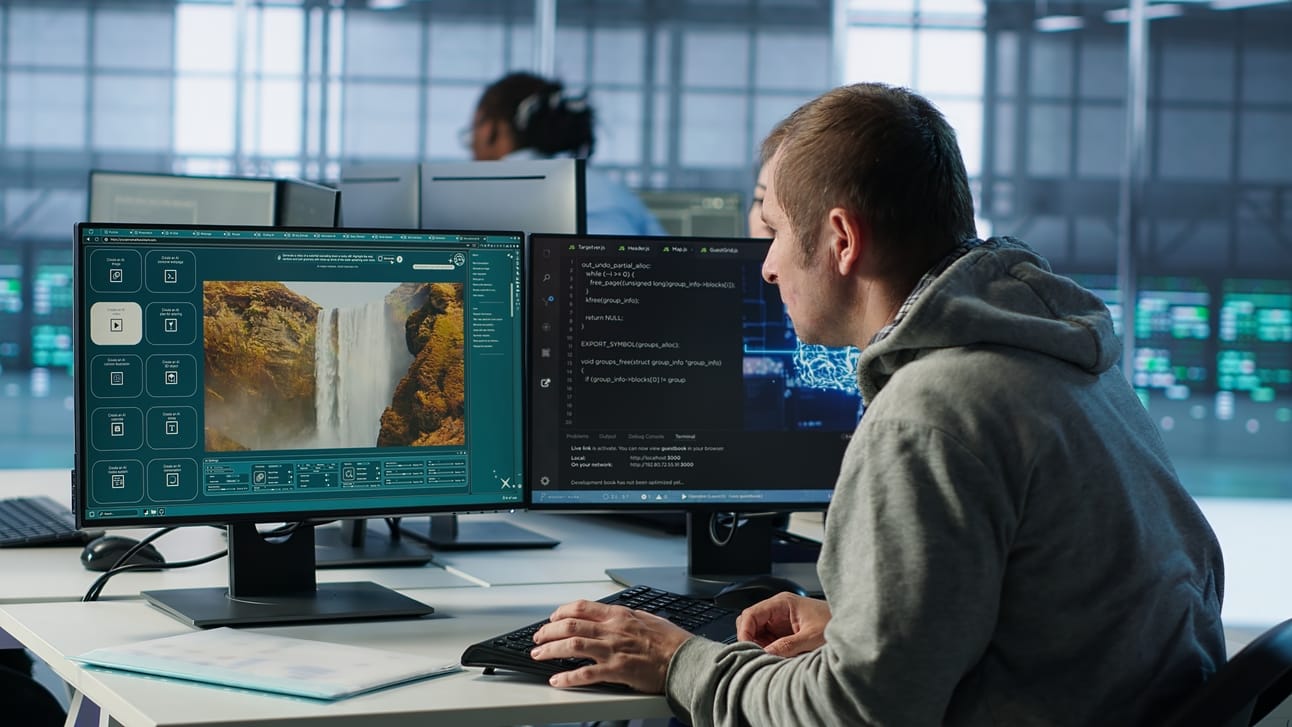A digital twin is a dynamic, virtual representation of a physical asset, network, or system that mirrors real-world conditions using real-time data. For the water sector, this technology is a game-changer. It offers the ability to simulate and optimise complex processeIn the world of water management, foresight has long been limited by incomplete data and static models. But in 2025, a new frontier has emerged—one that allows utilities, engineers, and policymakers to see not just what is happening, but what might happen. That frontier is the digital twins, ranging from water distribution to wastewater treatment, before making real-world changes.

What Are Digital Twins?
In essence, a digital twin integrates multiple data sources—SCADA (Supervisory Control and Data Aqusition) systems, IoT sensors, GIS (Geographic Information System) data, weather feeds, and more—to create a living model of a physical system. Unlike traditional modelling, which often represents a single moment in time, a digital twin evolves as new data streams in.
Water utilities can use this digital mirror to test operational scenarios, predict system failures, optimise energy use, and even forecast the effects of climate change on infrastructure.
Case Study: Southern Water’s River Health Monitoring
Southern Water in the UK has been pioneering the use of digital twins to protect and monitor river ecosystems. In a project launched in 2023, the utility deployed real-time water quality sensors in rivers across southern England. These sensors track levels of ammonia, dissolved oxygen, nitrates, and other indicators.
The data is fed into a digital twin of the local catchment system. Using machine learning algorithms, the system can simulate the impact of rainfall, pollution events, or infrastructure failures. It even supports “what-if” analyses to evaluate future planning scenarios, such as land use change or new development.
Thanks to this approach, Southern Water can respond proactively to pollution risks and fine-tune operations at nearby treatment works to reduce environmental impact. The twin not only provides regulators and stakeholders with transparency but also helps restore trust following public concern about sewage discharges.
Operational Optimisation and Asset Management
Digital twins are proving invaluable in the optimisation of treatment plants and distribution networks. In the Netherlands, Vitens—the country’s largest drinking water company—has used digital twins to simulate hydraulic conditions across its network. This has enabled real-time decision-making on pressure zones and pumping schedules, cutting energy use by 15% and extending asset lifespan.
Similarly, in Singapore, PUB has developed a digital twin of its entire water supply network. With real-time insights on pipe integrity, demand patterns, and energy usage, the system predicts pipe bursts, plans maintenance efficiently, and ensures water quality across the city-state’s decentralised water supply.
Climate Resilience and Emergency Planning
Digital twins are also being embraced as tools for climate adaptation. By integrating flood models, rainfall forecasts, and land elevation data, they can simulate extreme weather events and test the resilience of critical infrastructure.
In Copenhagen, Denmark, city planners use a digital twin of the urban drainage network to manage stormwater. When heavy rainfall is forecast, the system helps determine which retention basins should be emptied in advance and where mobile barriers might be deployed. As a result, the city has significantly reduced flood damage and insurance costs.
Enhancing Collaboration and Public Engagement
Beyond operations, digital twins can serve as powerful communication tools. Their visual, interactive nature makes them ideal for explaining complex systems to non-specialist audiences.
In Bristol, the City Council and Wessex Water have co-developed a digital twin platform for local rivers and stormwater systems. Community groups and school children can explore the digital twin online, learning how everyday actions affect water quality and flooding. It’s a novel way to foster public engagement and environmental stewardship.

Challenges and Limitations
While the promise is great, digital twins are not without hurdles. Key challenges include:
Data availability and quality: Many utilities still lack the high-resolution, real-time data needed to power a reliable twin.
Integration complexity: Bringing together legacy systems, sensor networks, and modelling platforms can be technically demanding.
Cost and expertise: Building and maintaining a digital twin requires investment and specialised skills in data science, hydrology, and systems engineering.
Cybersecurity risks: Like all digital infrastructure, digital twins must be protected against cyber threats, particularly when linked to control systems.
Nonetheless, as costs fall and tools become more user-friendly, adoption is expected to grow rapidly over the next five years.
The Future of Digital Water
In 2025, digital twins are shifting from experimental pilots to core operational tools. With mounting regulatory pressure, climate risks, and public demand for accountability, utilities can no longer afford to rely on outdated maps and spreadsheets.
Instead, the future of water is one of virtual mirrors—intelligent systems that learn, adapt, and guide decision-making in real time. By mirroring reality with precision and clarity, digital twins offer a path to greater resilience, sustainability, and trust.
And in a world where every drop counts, that’s a reflection worth investing in.




